#rhinoceros
Text

Hello!
I'm so proud to finally present you the artwork with all the Perissodactyla order including its subspecies (Rhinos, Tapirs, and Horses). Took me more than a year to finish but I am really happy with the result. The artwork includes the common name, its Latin name, and its conservation status. 46 animals in total of which 10 are sadly already extinct.
Here is the link in case you are interested:https://www.inprnt.com/.../all-perissodactyla-species.../
Thank you for your support!
#black rhino#javan rhino#white rhino#sumatran rhino#rhinoceros#illustration#drawing#scientific illustration#plain zebra#zebra#wild ass#artist on tumblr#wildlife#illo#donkey#malayan tapir#tapir#artwork#unique prints#illustration scientifique
82 notes
·
View notes
Text

24-4-24
#moleskine#sketchbook#sketch#daily#dailyart#dailydrawing#dailypainting#dailysketch#sketchaday#artoftheday#art#artbook#artists on tumblr#watercolor#gouache#painting#fineliner#drawing#rhino#rhinoceros#snake#green#reptile#animal
538 notes
·
View notes
Text
#rhinoceros#animals#exotic animals#exotic#beautiful animals#beautiful#nature#wild animals#wild#wildlife#wild world#yolas0
376 notes
·
View notes
Text
How would a rhino wear a hat?

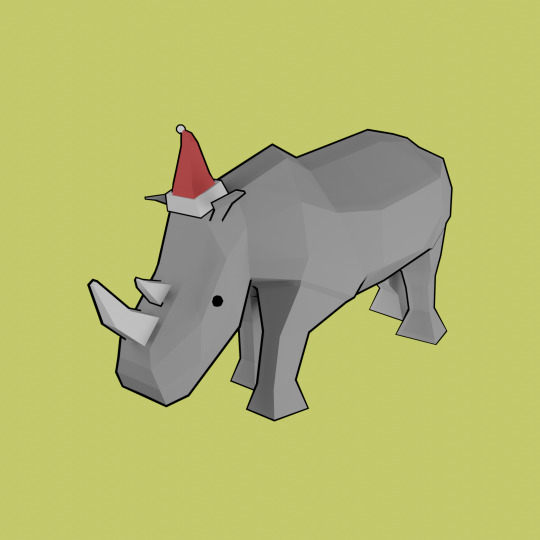
Rhino Christmas!
#piki's silly little guys#blender#3d#low poly#rhinoceros#i thought that putting a christmas hat on a rhinos horn was an original idea#turns out its not *sigh*
418 notes
·
View notes
Text
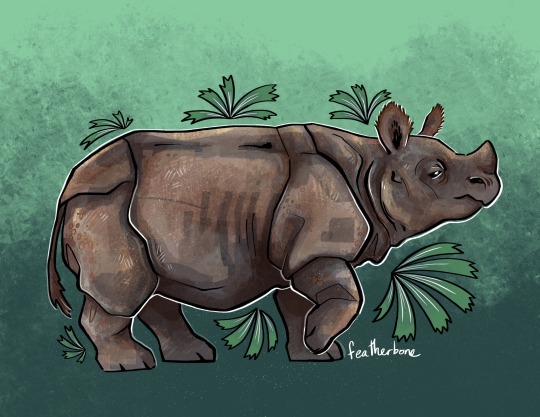
[ID: an illustration of a rhino facing to the right, with one foot raised slightly. It is surrounded by ferns on a forest green background. End.]
Javan rhinoceros! Once, they lived from northeast India to Southeast Asia - today they are one of the most endangered land mammals, with under 80 individuals left in Ujung Kulon National Park in Java, Indonesia.
280 notes
·
View notes
Text
The Kenya Wildlife Service celebrated the successful transfer of 21 eastern black rhinos to establish a new viable breeding population for the species that was on the brink of extinction decades ago.
In an 18-day exercise executed by highly trained capture and veterinary experts, the Loisaba Conservancy received the 21 rhinos from three different locations, becoming the 17th sanctuary in Kenya where the mammoth animals can roam and intermingle.
“It’s incredibly exciting to be part of the resettlement of rhinos to a landscape where they’ve been absent for 50 years,” said Tom Silvester, CEO of Loisaba Conservancy.
Kenya had 20,000 black rhinos in the 1970s before poachers decimated them for their horns. By the time the Kenya Wildlife Service (KWS) was established in 1989, rhino numbers had declined to below 400.
Since then, Kenya’s eastern black rhinos have made a remarkable comeback and today there are an estimated 1,004 individuals.
Kenya is a stronghold of the eastern sub species of black rhino, hosting approximately 80 percent of the entire world’s surviving population.
“Surpassing the milestone of 1,000 rhinos within four decades is a significant accomplishment,” said Munira Bashir, Director of The Nature Conservancy in Kenya.
The reintroduction this month of these 21 animals this month is a great milestone in Kenya’s rhino recovery action plan, and was made possible by support from The Nature Conservancy, San Diego Zoo Wildlife Alliance, other partners—and the three reserves from where the 21 rhinos originated, Nairobi National Park, Ol Pejeta Conservancy and Lewa Conservancy.
“In the recent past, one of the main causes of mortality of rhinos has been territorial fights due to limited space in sanctuaries which has also led to suppressed growth rates due,” explained Dr. Erustus Kanga, the Director General of Kenya Wildlife Service. “I am elated to be associated with this momentous effort to secure more space for this cornerstone species.”
Meanwhile, southern white rhinos continue to thrive in Kenya, having increased from 50 individuals that were imported from South Africa in the eighties and nineties to reach the current population of 971 individuals.
Kenya is also playing a critical role in efforts to save the northern white rhino from extinction, as it is host to the only remaining two females of the species left in the world. The international BioRescue project has developed thirty embryos awaiting implantation into surrogate females within the closely-related subspecies of southern white rhino.
“The return of black rhinos to Loisaba, 50 years after the last known individual here was killed by poachers in the 1970s, is a demonstration of how impactful partnerships between governments and conservation NGOs can be for restoring, managing, and protecting our natural world,” said Dr. Max Graham, CEO and Founder of Space for Giants, one of the project partners.
“And, of course, the return of black rhinos here gives all of us one of the most precious commodities of all: hope.”
-via Good News Network, February 25, 2024
#rhino#rhinoceros#conservation#hope posting#endangered species#wildlife#kenya#good news#hope#zoology#zoo animals#keystone species
341 notes
·
View notes
Text
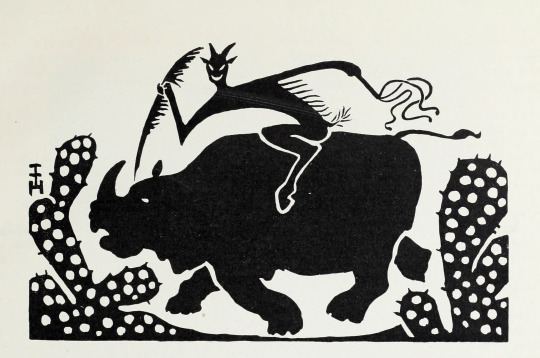
With a whip in one hand and a feather in the other, a devil rides the back of a galloping rhino.
Moderne Illustratoren. 1904. Thomas Theodor Heine, artist.
Internet Archive
432 notes
·
View notes
Text
Global rhinoceros numbers have increased to 27,000 despite populations being ravaged by poaching and habitat loss, new figures show, with some species rebounding for the first time in a decade.
Rhinos numbered about 500,000 across Africa and Asia in the 20th century but their populations have been devastated. Last year, they began showing signs of recovery in some areas, although two species – the Javan and Sumatran – remain close to disappearing.
Figures released by the IUCN African Rhino Specialist Group, the conservation body, indicate that the global rhino population increased to about 27,000 at the end of last year, with southern white rhino numbers increasing for the first time since 2012, from 15,942 at the end of 2021 to 16,803. In 2021, the world’s rhino population was estimated to be 26,272.
Black rhinos, native to east and southern Africa, have been heavily depleted by poaching for their horns but last year increased by nearly 5%, rising from 6,195 at the end of 2021 to 6,487 at the end of 2022. This increase has happened despite a rise in black rhinos killed by poachers, and has been aided by conservationists establishing new populations that have grown in size.
Continue Reading
369 notes
·
View notes
Text
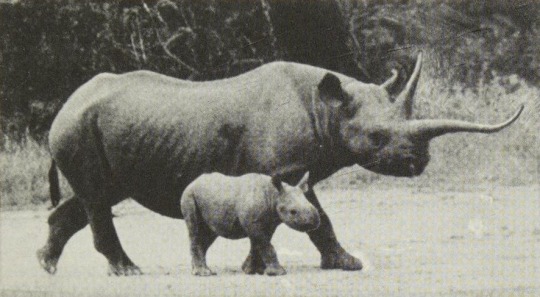
Black rhinoceros mother and calf
By: Unknown photographer
From: The Empire of Equus
1974
2K notes
·
View notes
Text
I don’t remember anything except that there was a rhinoceros beetle the color of a June bug and the size of a cat or mayhap a large freshwater fish. I know it was a rhinoceros beetle specifically because when I saw it I said, “Oh look - a rhinoceros beetle. Neat,” or something to that effect.
#dream#text#February 16th 2024#rhinoceros#beetle#bug#insect#fish#cat#rhinoceros beetle#queueueueueueueueueueueueueue
263 notes
·
View notes
Text
Some good news from Indonesia: the Sumatran Rhino Sanctuary in Way Kambas National Park has just announced that on November 25th their female Sumatran Rhino named Delilah gave birth to a healthy male calf!!!

(Photo credit: Indonesian Ministry of Environment and Forestry)
The as of yet unnamed calf is the second calf born at the sanctuary this month, and his mother Delilah was the second calf ever born at the sanctuary as well as the first captive bred Sumatran rhino to successfully give birth in captivity, so this is great news for captive breeding efforts of this species. There are only somewhere between 34 and 47 Sumatran rhinos in the wild, so captive breeding is incredibly important for this species survival. The sanctuary plans to eventually release the rhinos born at the sanctuary in order to help build the wild population back up. This baby is the fifth calf to be born at the sanctuary, and in addition to being Delilah’s first calf, he is also the first calf to be sired from his father, Harapan, who was originally born in the Cincinnati Zoo.

The mother and calf are currently being held in a naturalistic enclosure at the sanctuary (as the goal is to try to get them to live a life as similar to in the wild as possible) and are being heavily guarded to protect them from poachers. This species has suffered so much due to a combination of poaching for their horns as well as habitat loss. They are also pretty hard to keep and breed in captivity due to their shy nature, so this calf is amazing news!
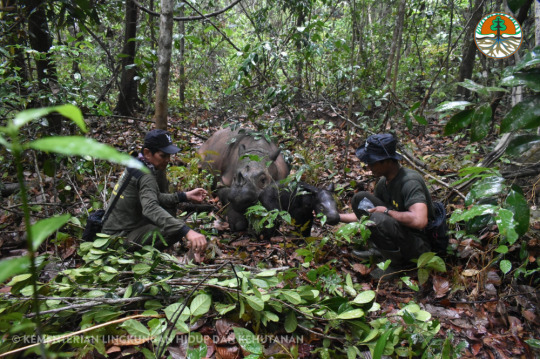
Also! Fun fact: this species of rhino is the closest living relative of the extinct Woolly Rhinoceros (Coelodonta antiquitatis). Which makes sense since the Sumatran rhino is the hairiest of all the living rhino species, which you can especially see with the babies.
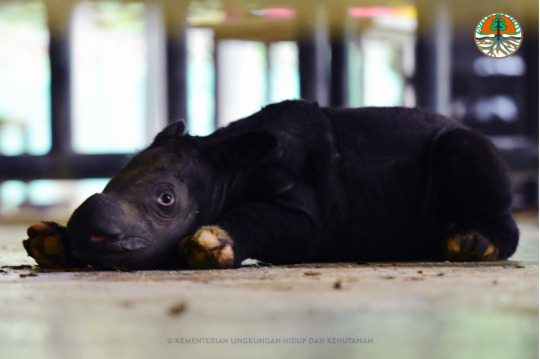
#indonesia#Indonesian wildlife#rhinoceros#sumatra#Sumatran rhinoceros#conservation#endangered species#good news#baby animals#baby rhino#wildlife#asian wildlife#animals#animal lover
329 notes
·
View notes
Text

Sandra Yagi (Japanese-American, 1955) - Rhinobeetle 2 (2010)
282 notes
·
View notes
Text
#rhinoceros#exotic animals#animals#beautiful animals#exotic#funny#funny animals#beautiful#nature#pets#wild world#wild
163 notes
·
View notes
Text

#What to do if the Bill is More Than You Expected#tips#tricks#life hacks#helpful hints#advice#rhino#rhinos#rhinoceros#don’t ever skip out on the bill folks#unreality
224 notes
·
View notes
Text

A German SdKfz 164 Nashorn (Rhinoceros) which had an 88mm gun on a Panzer III chassis - Leningrad 1943
#world war two#1940s#worldwar2photos#history#ww2#ww2 history#wwii#world war 2#wwii era#ww2history#rhinoceros#nashorn#sdkfz164#1943#leningrad#soviet union#sovietunion#eastern front
145 notes
·
View notes
